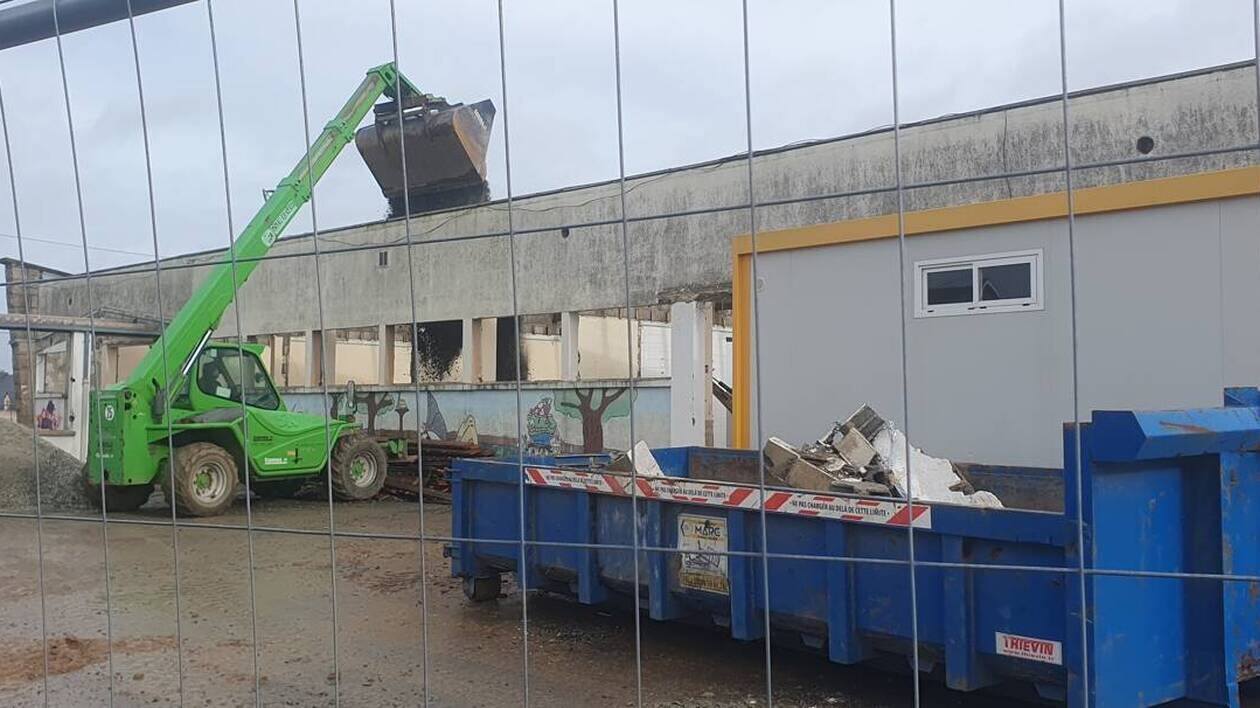The Rise Of Femicide: Exploring The Factors Contributing To The Increase

Table of Contents
1. Defining Femicide and its Scope
Femicide, also known as feminicide, is the intentional killing of women because they are women. It's a distinct form of gender-based violence, differing from other forms of homicide by focusing on the gendered nature of the crime. Femicide statistics often reflect a pattern of violence against women, including domestic abuse, sexual assault, and other forms of harassment and control. Understanding the specific motivations and contexts surrounding these killings is crucial for effective prevention strategies. The term encompasses a wide spectrum of violence, from intimate partner femicide to honor killings and those committed during armed conflicts. Accurate femicide statistics are crucial for developing effective strategies.
2. Societal and Cultural Norms
2.1 Gender Inequality and Patriarchy
Deeply ingrained patriarchal structures are a cornerstone of femicide. These systems normalize violence against women and legitimize male dominance.
- Discriminatory Laws: In many parts of the world, discriminatory laws and policies perpetuate gender inequality, often leaving women with limited legal protection and recourse.
- Cultural Practices: Certain cultural practices, such as honor killings and child marriage, directly contribute to the vulnerability of women to violence and murder.
- Societal Expectations: Societal expectations that confine women to specific roles and limit their autonomy create an environment where violence is more easily perpetrated. Concepts like "machismo" and "toxic masculinity" further exacerbate this problem.
2.2 Acceptance of Violence
The normalization of violence in society significantly impacts attitudes towards women.
- Media Representation: The portrayal of violence against women in media, often trivializing or glorifying such acts, contributes to the desensitization of society.
- Religious Interpretations: Misinterpretations of religious texts to justify violence against women are also a concerning factor.
- Family Structures: Family structures that condone or tolerate domestic violence create an environment where femicide is more likely to occur. These norms often foster a culture of silence and acceptance of violence against women.
3. Lack of Legal Protection and Enforcement
3.1 Weak Legal Frameworks
Inadequate laws and weak enforcement contribute significantly to impunity for perpetrators of femicide.
- Legal Loopholes: Many legal systems contain loopholes that allow perpetrators to escape justice, undermining efforts to hold them accountable.
- Lack of Resources: Insufficient resources for investigation and prosecution often lead to a lack of effective law enforcement related to femicide cases.
- Corruption: Corruption within judicial systems can further hinder the pursuit of justice for victims of femicide.
3.2 Limited Access to Justice
Women often face significant barriers in accessing justice, further perpetuating the cycle of violence.
- Fear of Retaliation: Fear of retaliation from perpetrators prevents many women from reporting crimes and seeking legal protection.
- Lack of Support: The lack of adequate victim support services limits access to crucial assistance during the legal process.
- Procedural Complexities: Navigating complex legal procedures can be overwhelming and discouraging for victims, making it difficult to pursue justice.
4. The Role of Technology and Online Misogyny
4.1 Online Harassment and Cyberstalking
Online platforms are increasingly used to harass, threaten, and incite violence against women.
- Online Threats: Online threats, including explicit death threats and violent imagery, create a climate of fear and intimidation.
- Doxing: The practice of doxing, publicly releasing personal information, can put women at severe risk of violence.
- Spread of Misogynistic Content: The widespread availability of misogynistic content online normalizes and encourages violence against women.
4.2 The Spread of Misinformation and Hate Speech
Misinformation and hate speech online fuel violence against women by justifying and encouraging such actions.
- False Narratives: False narratives that blame women for violence against them create a climate of impunity for perpetrators.
- Conspiracy Theories: Conspiracy theories that demonize women can incite violence and hatred towards them.
- Online Radicalization: Online spaces can facilitate the radicalization of individuals who then commit acts of violence against women.
5. Socioeconomic Factors
5.1 Poverty and Economic Dependence
Poverty and economic dependence on male partners significantly increase women's vulnerability to violence.
- Poverty and Femicide Rates: Studies demonstrate a clear correlation between poverty and higher rates of femicide.
- Economic Control: Economic control exerted by male partners can trap women in abusive relationships, increasing their risk of femicide.
5.2 Lack of Educational Opportunities
Limited access to education severely impacts women's empowerment and their ability to escape violent situations.
- Literacy Rates and Femicide: Lower literacy rates are often associated with higher rates of femicide.
- Empowerment Through Education: Education provides women with the tools and resources to escape abusive situations and advocate for their rights.
6. Conclusion: Combating Femicide Together
The rise of femicide is a complex issue stemming from the interplay of societal, legal, technological, and socioeconomic factors. Addressing this crisis requires a multi-pronged approach, tackling deeply ingrained patriarchal norms, strengthening legal frameworks, combating online misogyny, and improving socioeconomic conditions for women. We must actively challenge misogynistic attitudes, promote gender equality, and ensure women have access to justice and support. To combat femicide, we need to support organizations dedicated to ending gender-based violence, advocate for stronger legislation protecting women, promote education and economic empowerment, and challenge the normalization of violence against women. Let's work together to end femicide and build a safer world for all women. Learn more and join the fight to prevent femicide today!

Featured Posts
-
 Solve The Nyt Mini Crossword Answers For March 22
May 20, 2025
Solve The Nyt Mini Crossword Answers For March 22
May 20, 2025 -
 Biarritz Budget Logements Saisonniers Et Sainte Eugenie Points Forts Du Conseil Municipal
May 20, 2025
Biarritz Budget Logements Saisonniers Et Sainte Eugenie Points Forts Du Conseil Municipal
May 20, 2025 -
 Everything About Lou Gala From The Decameron
May 20, 2025
Everything About Lou Gala From The Decameron
May 20, 2025 -
 Big Bear Ai Holdings Inc Bbai A Top Ai Penny Stock Pick
May 20, 2025
Big Bear Ai Holdings Inc Bbai A Top Ai Penny Stock Pick
May 20, 2025 -
 Yeni Formula 1 Sezonuna Hazir Olun Geri Sayim Ve Oenemli Detaylar
May 20, 2025
Yeni Formula 1 Sezonuna Hazir Olun Geri Sayim Ve Oenemli Detaylar
May 20, 2025
Latest Posts
-
 Fremantles Q1 Revenue A 5 6 Drop Explained
May 20, 2025
Fremantles Q1 Revenue A 5 6 Drop Explained
May 20, 2025 -
 Fremantle Q1 Revenue Down 5 6 Impact Of Buyer Budget Cuts
May 20, 2025
Fremantle Q1 Revenue Down 5 6 Impact Of Buyer Budget Cuts
May 20, 2025 -
 Nagelsmann Selects Goretzka For Germanys Nations League Campaign
May 20, 2025
Nagelsmann Selects Goretzka For Germanys Nations League Campaign
May 20, 2025 -
 Goretzka In Germany Nations League Squad Nagelsmanns Selection
May 20, 2025
Goretzka In Germany Nations League Squad Nagelsmanns Selection
May 20, 2025 -
 Germany Defeats Italy 5 4 On Aggregate Heading To Uefa Nations League Final Four
May 20, 2025
Germany Defeats Italy 5 4 On Aggregate Heading To Uefa Nations League Final Four
May 20, 2025
